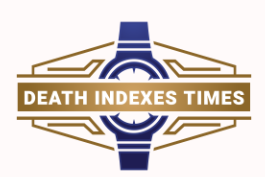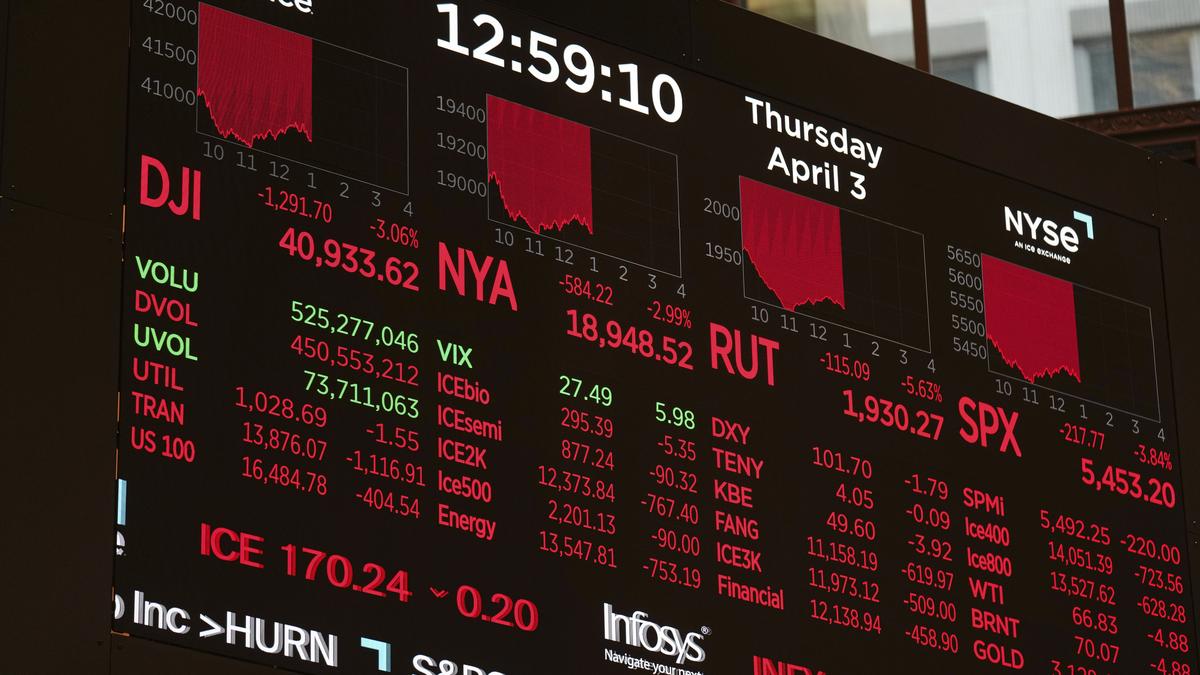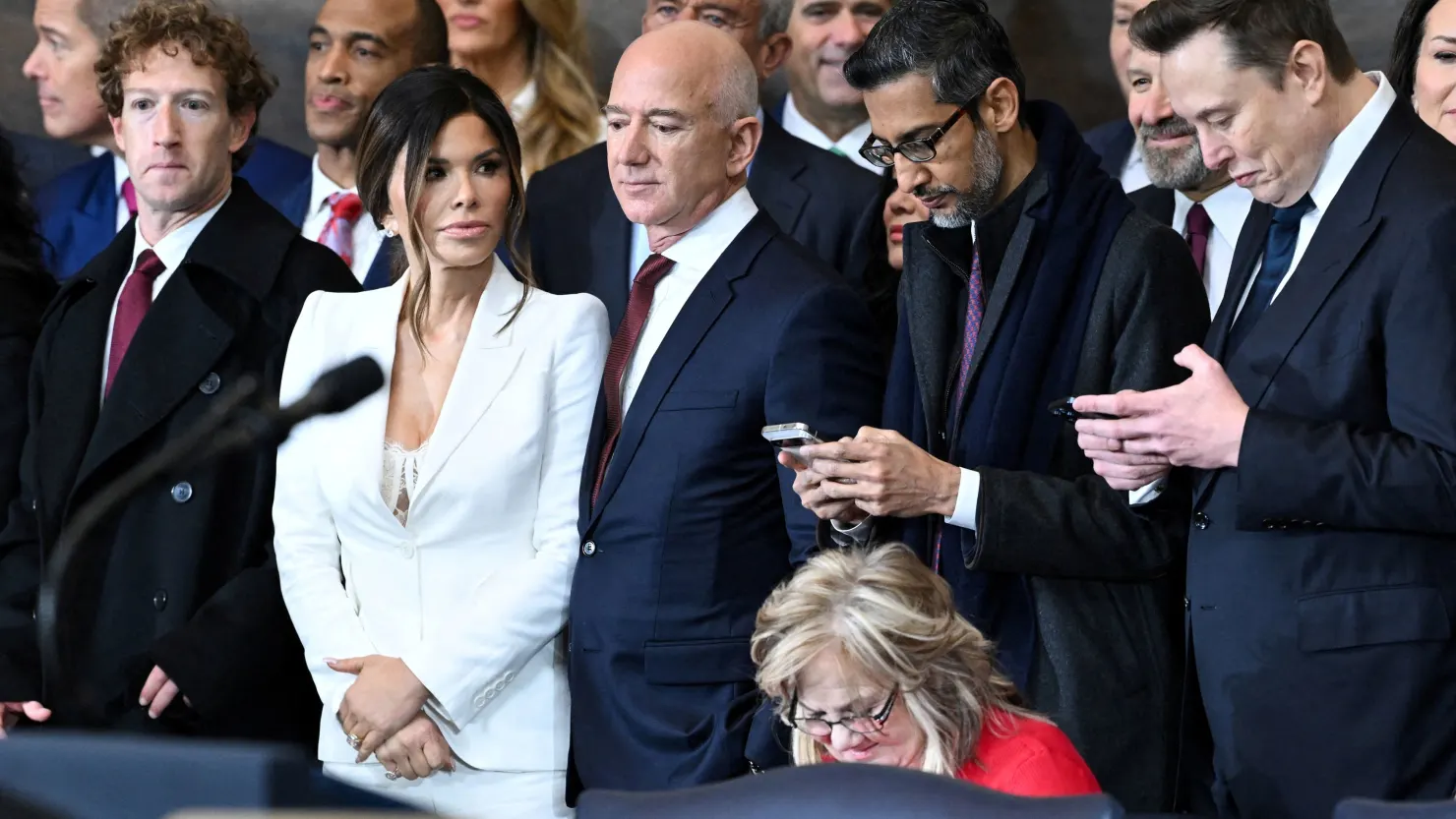In one of the most significant market sell-offs since the COVID-19 pandemic, major U.S. tech stocks saw a sharp decline, with Apple leading the charge. The downturn was triggered by President Donald Trump’s announcement of sweeping tariffs that sent shockwaves through the global economy and rattled investors.
On the heels of these new tariffs, the Dow Jones Industrial Average plummeted 2.72%, and the S&P 500 dropped 3.21%, as market participants feared the economic repercussions of these trade measures. Apple, which has significant manufacturing operations in China, saw its shares fall 8%, marking one of the largest single-day declines for the company in recent history. This was part of a broader sell-off that affected numerous tech companies heavily reliant on Asian supply chains.
Tariffs and Global Market Turmoil
President Trump revealed plans to impose a 10% baseline tariff on all imports to the United States, with even higher duties on goods from certain countries. This is the highest level of tariffs in over a century, according to Fitch Ratings. The tariffs are seen as a direct threat to the stability of global trade, with far-reaching consequences for businesses across multiple industries.
Apple’s drop was emblematic of the broader pain felt by tech companies that rely on Asian manufacturing. According to Citi, more than 90% of Apple’s manufacturing is based in China, a country that was especially hard-hit by the new tariffs. Rosenblatt Securities estimates that Apple could face as much as $39.5 billion in tariff-related costs. If these costs were absorbed by Apple, it could result in a nearly 32% hit to the company’s operating profit and earnings per share.
The tariff increases also raised concerns about their impact on other major tech firms. Microsoft and Alphabet, the parent company of Google, saw their stock prices fall 2.1% and 3.2%, respectively, due to fears that increased costs for components like chips and AI servers could hurt profit margins. The semiconductor industry, in particular, faced the potential for higher costs. Though semiconductors were not specifically targeted in the tariff announcements, analysts predict that they would still be affected by the 10% baseline duties.
PC and Retail Sectors Feeling the Heat
The effects of these tariffs rippled through a wide array of industries, with PC manufacturers such as Dell and HP seeing their shares decline by 10% and 8%, respectively. The U.S. imported nearly $486 billion in electronics last year, and analysts predict that the tariff hikes could lead to cost increases of 10%-25% for PC manufacturers. This could add between $200 and $500 per unit, putting additional pressure on margins and possibly pushing prices higher for consumers, further dampening already weak demand for PCs.
Retail giants, including Walmart, Amazon, and Target, also felt the impact. These companies rely on suppliers in Asia, particularly China, and the new tariffs threaten to increase their costs significantly. Shares of these retailers fell between 3% and 7%, and the S&P 500 retail index saw a 5.4% decline, hitting its lowest point since September 2024.
In particular, companies in the sportswear sector were hit hard. Nike and Lululemon, which rely on manufacturing in Asia, saw their stocks drop by 10.9% and 10.1%, respectively. Jefferies analysts warned that the new tariffs would severely affect footwear and apparel companies, as rising costs from tariffs would squeeze profit margins.
Impact on Automakers and Banks
The automotive industry wasn’t immune either, with U.S. carmakers like Ford and General Motors seeing their stocks drop by 1.4% and 2.1%, respectively. Electric vehicle makers Rivian and Lucid Motors saw their shares tumble as well, with declines of 3.2% and 4.8%. Tariffs on imported vehicles are set to take effect on Thursday, with the additional costs potentially adding thousands of dollars to the price of cars. According to Anderson Economic Group, the total consumer impact could be as high as $30 billion in the first full year.
For banks, the news was equally unsettling. Major Wall Street institutions such as JPMorgan Chase, Citigroup, and Bank of America saw their shares fall between 5.3% and 8%, reflecting investor concerns about the broader economic impact. Weaker consumer confidence and reduced spending could hurt loan demand, and declining equity valuations could lead to lower investment banking revenues. The S&P 500 banks index fell 6%, and regional banks were also hit hard, with stocks like Citizens Financial and U.S. Bancorp among the biggest losers.
Pharmaceuticals and Medical Devices: A Mixed Picture
While most industries faced a steep decline, pharmaceuticals showed some resilience in early trading. Major drugmakers like Pfizer and Johnson & Johnson managed to weather the storm, thanks in part to their temporary exemption from the new tariffs. However, analysts warned that the pharmaceutical industry was not entirely safe. Trump’s administration has shown a willingness to make changes to the pharma sector, and future tariffs or other measures targeting imported pharmaceutical products could still be on the horizon.
Medical device companies, on the other hand, were not as fortunate. Companies like Dexcom and GE Healthcare saw their shares fall more than 5% as they faced potential supply chain disruptions and revenue losses due to the tariffs.
Conclusion: Growing Fears of Recession
The announcement of these sweeping tariffs has raised fears of a potential recession, with Deutsche Bank’s Senior U.S. Economist Brett Ryan warning that the measures could shave 1 to 1.5 percentage points from U.S. growth. As companies face higher costs, they may be forced to pass those costs onto consumers, leading to reduced demand and potentially hurting profit margins across a variety of sectors.
As the global market grapples with the fallout from these tariffs, investors are left wondering how long it will take for the storm to pass and whether the U.S. economy can weather the growing risks of a trade war. While some sectors may find ways to adapt, the broader picture remains uncertain as the market braces for further turbulence in the months to come.



